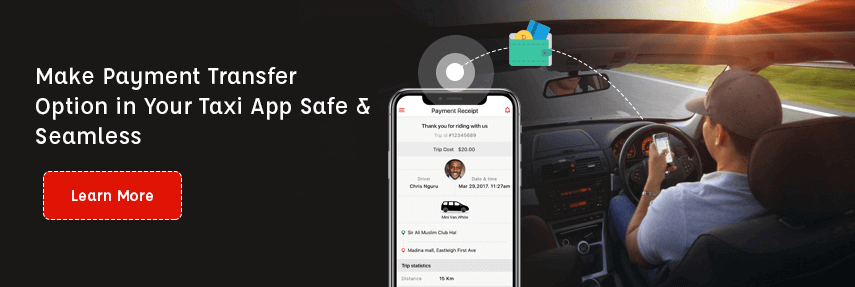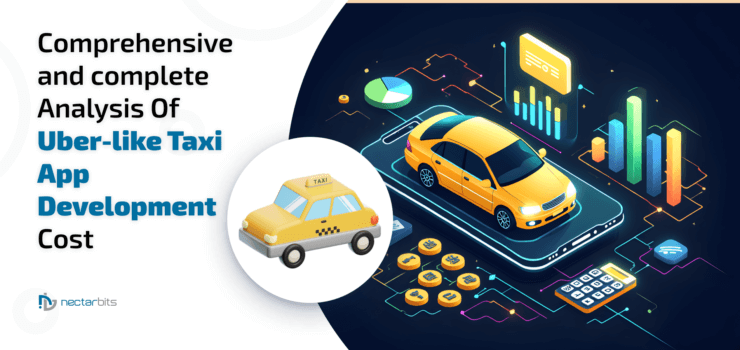From dusk to dawn, whenever the idea of moving to a shopping mall, theatre, park, and other places pops-up, booking the Uber on our mobile, is what comes to our mind. Just a couple of taps and the taxi get booked and arrive at your location to pick up you. It’s so easy.

But, eleven years back, it was not so much painless for the two entrepreneurs when they were stuck in a cold Paris night. At the time, the unmet need has given birth to a unique idea which was later shaped into a revolutionized solution that has made our lives so easier.

It’s a story of Uber, that’s created by Travis Kalanick and Garrett Camp after a lot of hustle and bustle. Over the past decade, Uber has recognized as the world’s most capitalized start-up that has spread its wings across more than 80 countries with nearly one million drivers’ network. With continuous innovation, the company has increased revenue to $3.16 billion. When we look at the Uber’s timeline, it appears the company has left no stone unturned to set its unmatched growth and grandeur success in stone.
It’s impressive!
This is why the new entrepreneurs got fascinated with the taxi app development idea. Furthermore, the taxi app development is not just a novelty; instead, it has become a dire need for traditional taxi businesses. The passengers are choosing mobile alternatives to easily book the taxi on-the-go. It’s a sign, taxi mobilization trend is here to stay, and not uberizing the taxi services can make the traditional taxi business an extinct species.

It’s an alarming situation for the traditional set-ups. What to do now? Motivated with the idea of taxi app development that can save your business and help you stand out in the crowd? That’s a good idea.
But, everything is not so rosy. The phenomenal success of Uber that looks so captivating is not earned in a month or year. They had bad times, faced failure, suspension, and even alleged for the law violation just because of the increasing market share. But, they made it big by adding the right ingredients to the success recipe at the right time.
Want to conquer the taxi market and cherish Uber-like success? If so, here are the key steps to follow on how to rightly build the taxi app that can create a eureka moment for you:

- Create a list of the basic features
The Uber app includes two mobile interfaces- one for drivers, and other for passengers, and one web interface for admin.
The passenger app allows the users to find the nearby taxi and book them after the sign-in process using user credentials. The passengers can book different types of a taxi based on their needs and can specify the extra accessories if required. The passengers stay updated with every activity related to taxi booking through push notifications. The payment becomes seamless with multiple options such as cash, credit/debit card, mobile wallets, and others. The real-time location of the drivers can also be tracked on the map and they can be rated for the quality of the service provided.
The drivers can register in the app only after the admin’s approval. They can accept or reject the booking requests based on their availability. They can get the directions for easy arrival at the pick-up point and reach out to the destination with GPS navigation through a map. The in-app chat allows the drivers to directly connect and communicate with the passengers.
The admin dashboard is a web panel where the admin can view all the important information on a single dashboard. The driver’s activity, vehicle’s detail, trip invoices, analytics, and pretty more can be viewed and analyzed to keep the business in a profitable state.
- Go MVP way
When the features to include in the app are finalized, the next step is to view how the app would look like when it’s launched. Waiting until the development of a complete solution and then reflecting the changes is an expensive process. Getting a blueprint of the app to-be-build with MVP development is a better approach.
The MVP will give a rough idea about how the app functions, whether to meet the passengers’ and drivers’ needs or not and require some improvements in both mobile interfaces connectivity or not.

- Choose the app development platform
Before making the decision for the resources and tools required for the front-end and back-end development, selecting the operating systems for which the app is to be built is essential.
Broadly, the taxi businesses opt for building the app for two platforms- Android, and ios. There are two approaches- native app development and cross-platform development to get the app built for android and ios. However, there are more cons associated with a hybrid approach rather than pros, so you should take the decision judiciously.
Additionally, the decision for development platforms also depends on the region you are targeting with the taxi app as there are some countries where the Android app wins the largest market share and at other places, the iOS app conquers the market.
- Partner with the right team
When you don’t have an in-house development team at your end, then outsourcing the taxi app development is the only alternative available. When you Google for the mobile app development team, the millions of the results come up that make the situation a little more difficult. How you are going to make the final decision?
Make sure the company’s size, high price, and geographical location don’t guarantee the quality development of the taxi application. You should thoroughly check the team’s expertise, skills, and experience in the taxi app development. Assessing the technology stack they embrace and their established development standards and practices are vital.
- Don’t forget to ask the development cost
Undoubtedly, before signing a contract with the development team, it’s good to be clear on the cost aspect because you are going to spend your hard-earned dollars on this. Double-check the hourly rates or fixed cost for the taxi project where all the features to include are vividly defined. Also, ask the company about the additional cost they may incur when the changes are requested in the app post-development.

Many times, the entrepreneurs have some confusion regarding cost estimation. They are puzzled with the high variation in development costs determined by different development companies. To make things clear, we have got your needs covered in the next section that will illustrate how Much Does it Cost to Develop the Uber-like Taxi app:
- Analysis
Under this section, the total number of the working hours that will be consumed while engineering the full-fledged taxi application is estimated. The taxi developers had a meeting with the client to know what they exactly want in the app in terms of features, design, back-end, and other things to give the right estimate for every aspect of the app development. The document including all the technical specifications and project scope is also created post-discovery and research phase. The high level of analysis, that’s commonly referred to as discovery workshop is the cheapest stage where the companies demand from $5k to $15k depending on the project size.
Read more : The Effects of Mobile Apps in Our Lives
- Designing
The UI and UX design stay at the heart of the development process because the visuals create an indelible impression rather than features and functionalities. The cost of world-class design packed with eye-catchy graphics, brilliant animation, and interactive capabilities could fly up to the sky which brings profits in return but it highly impacts the budget beforehand. The three different interfaces are created which means crafting the design for three different apps. The efforts of conveying more in less through unique design cost from $5k to $50k.
- Development
Here, the actual coding for every feature of the passenger, driver, and web app includes, which highly vary from one another. Also, after every feature is developed, the unit testing is performed to remove all the logical errors, if any. Thereafter, the next feature is developed that also goes from the same process. With 60% of the time consumption in programming, the development aspect eats up $10k to $15k.

Plus, the development cost varies from one geographical region to another region such as the UK and European countries charge is quite higher as opposed to South Asian countries. So, no ballpark cost can be defined.
- Deployment cost
After hosting the app on a shared server or a dedicated server, it can be deployed to the live environment for flawless functioning of the app on the range of devices. The developers take the responsibility of submitting the app to the respective app store or other marketplaces, and against the submission, a trivial amount that’s required to create a developer account is taken.
- Technical support cost
After the app deployment, the chances exist that some errors may occur, a few enhancements are required in the app, or the client wants the taxi app for a new version, say Android or iOS, then post-maintenance services are offered to the client. The maintenance or technical support cost varies according to the app’s complexity or the type of support required.
Read more : How to make a Taxi/Cab Booking App like Uber?
All in all, the taxi app development cost bank on the set of features, complexity level, and its capacity to accommodate the range of drivers and passengers’ request. From $15 to $50k is the cost that the development companies demand.
Hold on! There are some inexpensive options available that appear quite attractive. Is it good to go ahead using a white-label solution or creating Uber-clone app? Here’s the answer:
The white-label solution appears an attractive solution to get the taxi business to the market in a couple of days without spending bundles. There are some downsides to this approach- the readymade products are not very scalable, you cannot check the source code, and the high-level of customization is not feasible which implies reflecting the brand in the app is impossible. It makes off-the-shelf solution not a good choice for the long run.
Uber has already acquired a large market share, which makes budding entrepreneurs feel like creating a position in the market and getting ahead of the pack is implausible. But, there is good news for you- despite earning enormous success, Uber is still not able to monopolize the market. There are a lot of local markets that are not yet uberized, that’s where the opportunity to thrive with the mobile taxi business awaits you.
CTA :
Explore the areas where Uber, Lyft, or Grab are still not available, and if exist, find out where they are lacking that can become a competitive advantage for your business and you can make an easy entry to the market.
For instance, Uber revolutionized the transportation industry not just with a taxi-hailing app, but it has evolved the business with ridesharing concept, micro-mobility movement (Ride-hailing with motorbikes), and more. Perform the audit to identify the unrealized need of the taxi market and tap the opportunity to reap the benefits galore.
The final word
The taxi app development is not just about including the right set of features. Instead, it’s about making the passengers feel what’s unique about the app that makes the taxi-hailing a plain-sailing journey. Creating a unique value proposition around the business model and market demands brings success to the app, but you should know how much deep hole the app development will put in the pocket.
The number of features, development platforms, and development company location plays a vital role in approximating how much time and the cost is associated with discovery, designing, development, deployment, and post-deployment stages. Decide to get a clear idea about this.
My two cents: Create MVP first to test the beta app response in the market and then go ahead with full-fledged solution development that saves you from expensive modifications when done at the later stage.









